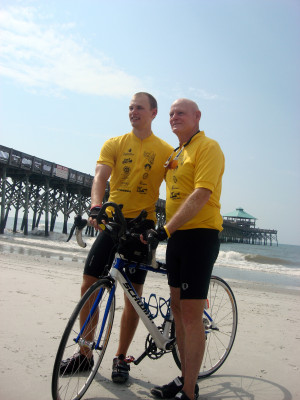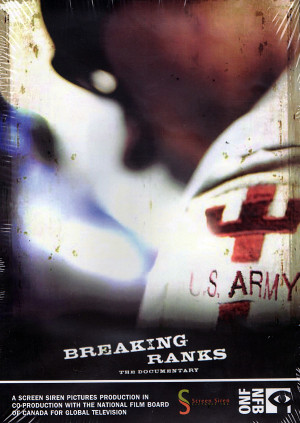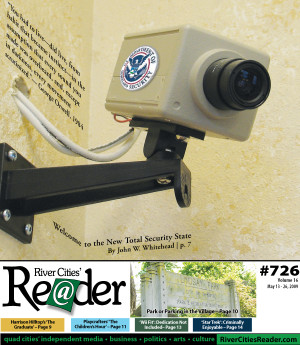Yellow Tail is readily available at your local grocer and is perhaps the most recognized wine brand from Down Under. The bottles sport a whimsical label of a yellow-footed Rock Wallaby (relative to the kangaroo), each a different color to designate the type of wine. They typically retail for under $10. This Australian wine has become "the number-one imported wine in America and the fastest-growing imported wine in U.S. history," according to Better Living (BLGuide.com). But don't let this heavily marketed brand deter you from venturing into the unique regions of Australia and its neighbor, New Zealand, that produce some truly premium wines.
Australia and New Zealand are vast countries, and their climate and terrain vary dramatically. Because of their geographic diversity, wines become known by, and famous for, their place of origin. Efforts have been made to maintain the integrity of wine production, and there is a growing movement to classify Australian and New Zealand wine in more regional terms.
New Zealand has developed a set of industry standards, known as Sustainable Winegrowing New Zealand. The Australian wine industry has set forth an identifying system known as Geographic Indications.
According to the Australian Wine & Brandy Corporation, wine carrying a regional name must have 85 percent of its fruit sourced from that region. In Wine Atlas of Australia & New Zealand, James Halliday outlines the distinguishing features of 40 distinct wine-growing regions and describes the climate, soil, and grape varieties of each.
One of Australia's oldest and best-known wine regions, the Barossa Valley, is also south Australia's most visited tourist destination. The Barossa Valley is best known for its Shiraz. Some of the oldest active grape-producing vineyards are here, significant because old vines produce highly concentrated, intense, and full-bodied wines.
There are many top-notch wine producers in the Barossa Valley. One of our favorite wineries is Elderton (EldertonWines.com.au), a small, family-owned winery situated in the heart of the valley. In addition to great wine, it has become a leader within the Australian wine industry in environmental sustainability. The winery uses solar power, recycles its water, uses biodynamic farming practices, and recently gained organic certification.
Tantalus Red, from Elderton, combines the famed Shiraz grape with its Cabernet Sauvignon. It's an easy-drinking style of premium red at an everyday-drinking price (under $15). Named for a figure from Greek mythology, Tantalus offended the gods and was punished by being kept perpetually thirsty and hungry but tantalized by water and fruit he could see but not quite reach.
Farther south is the Coonawarra wine region, known for producing world-class red wines. The region possesses rich red clay over limestone that is well drained (a key element in premium-grape-growing) and has one of the longest ripening seasons in the world. Penley Estate Wines (Penley.com.au) hail from this region. The Penley Estate Gryphon Merlot expresses distinctive Coonawarra fruit, loaded with regional personality (concentrated and luscious, but seldom tannic). The Phoenix Cabernet Sauvignon shows "dominance of spicy Cabernet fruit, a dense ripeness with hints of smoky oak and grape tannin. A wine made to enjoy while young, ripe but elegant, distinct Coonawarra Cabernet Sauvignon characters are evident."
In the relatively cool climate on the west coast of Australia lies the lesser-known yet inspiring Margaret River Wine region. A fun tale from the area is told by the wine-makers at Ringbolt. According to the company's Web site (Ringbolt.com), western Australia's rugged southwest coastline is littered with shipwrecks - the Ringbolt being one of them. The winery produces a terrific "typical of cool climate" Cabernet Sauvignon - grapes that provide a sweet core yet are "earthy."
Though considerably smaller, Australia's southeast neighbor New Zealand has 10 main wine-growing regions with greatly varying climate and terrain. The vines of Marlborough were planted just over three decades ago. The country's largest wine region - at the northern end of New Zealand's southern island - it has since become the county's best-known wine-growing area. It is famous for its Sauvignon Blanc and home to two of our favorites. Seresin Momo's organically grown grapes are picked late evening and early morning to ensure that the fruit arrives at the winery cool. The result is a richness of fruit with crisp citrus to give a long and clean finish. Allen Scott Sauvignon Blanc is light to medium-bodied, with nicely integrated acidity and tasty lime flavors with just a hint of lemon. The finish is dry and refreshing.
New Zealand also has its share of notable reds. In Marlborough, you'll find the cool Wairau and Awarere valleys. Pinot Noir, the third-most-planted grape, is grown here. Drylands Estate, "pick of Marlborough" for wine aficionados, produces a light and smooth Pinot, complemented by aging in French oak.
Another fine example is the Nick Goldschmidt Boulder Bank Pinot Noir. Light-cherry-colored with rich, dark fruit on the nose, soft tannins, and good structure, this Pinot is a terrific value.
The country's second-largest region, Hawkes Bay, produces a considerable range of wine styles. Chardonnay is the most widely planted grape variety, but the long days allow for later-ripening red-grape varieties such as Cabernet Sauvignon, Merlot, Cabernet Franc, and Syrah. Alpha Domus planted its vines on the western Heretaunga Plains in Hawke's Bay, released its first wines in 1996, and is now well-known in the U.S. and England. Alpha Domus is in the vicinity of an historic airfield. Its logo and wine names are all representative of the vintage planes that can still be seen in the sky above the vineyard. The Navigator is a blend of Merlot, Cabernet Sauvignon, Cabernet Franc, and Malbec. The berries are hand-picked, basket-pressed, and aged in a mixture of French and American oak, making it rich yet balanced with sweet, ripe berry fruit and spicy oak.
So have fun, explore, and discover the food-friendly and fabulous wines from Down Under.
Nancy Rosetti is co-owner of the Faithful Pilot Cafe & Spirits and the online wine store RosettiWineShop.com. The restaurant (117 North Cody Road in LeClaire) hosts monthly wine tastings, including a Down Under event on Sunday, May 31, at 3:30 p.m. For more information, call (563)355-4139 or visit FaithfulPilotCafe.com or RosettiWineShop.com.
 Organic food is often praised as better-tasting and more nutritious than its conventional equivalent, and it's grown with fewer chemicals. But because it typically travels long distances to get to consumers, it has a significant environmental cost.
Organic food is often praised as better-tasting and more nutritious than its conventional equivalent, and it's grown with fewer chemicals. But because it typically travels long distances to get to consumers, it has a significant environmental cost.
 The window is closing.
The window is closing.
 When he got started in blood banks almost 20 years ago, David R. Green's understanding of the blood-transfusion process wasn't very sophisticated. Green, now the president and CEO of the
When he got started in blood banks almost 20 years ago, David R. Green's understanding of the blood-transfusion process wasn't very sophisticated. Green, now the president and CEO of the  The two men came to the cross-country bike ride in different ways.
The two men came to the cross-country bike ride in different ways. Some people call them "deserters," while others choose the nobler-sounding words "war resisters." The term you use almost certainly betrays how you feel.
Some people call them "deserters," while others choose the nobler-sounding words "war resisters." The term you use almost certainly betrays how you feel.
 Our 40-page spring 2009 Dining Guide can be downloaded
Our 40-page spring 2009 Dining Guide can be downloaded 







